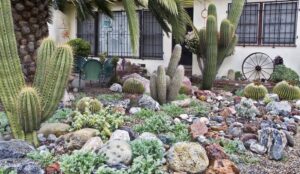With spring finally sprung, it’s time for prospective gardeners to start thinking about what’s necessary to bring their plants to life. Sure you could go to the nursery and pick up whatever strikes your fancy, but without proper research, this could mean gambling hundreds of dollars on the hopes your plants will survive and thrive without much care. Sometimes, this will work in your favor, but other times, your hard work will all be for naught. If you’ve struggled with cultivating a green thumb, the answer might be right under your toes: your soil fertility, or lack thereof.
Plan around PH
A major factor in whether your plants will flourish is the acidity or alkalinity of your soil, measured by taking the pH. The pH of your soil will impact the plant’s ability to uptake nutrients necessary for growth, with some plants preferring a higher pH and some a lower. A quick and easy at-home test you can conduct to get the general gist of your soil pH requires only a few supplies: distilled water, vinegar, and baking soda. Collect some soil in two separate containers. To one, add 1/2 cup of vinegar. Vinegar reacts in the presence of basic compounds, so if it fizzes, you have alkaline soil, with a pH higher than 7. If nothing happens, add distilled water to the other container of soil until you’ve got mud, then pour in 1/2 cup of baking soda. If this mixture reacts, you have acidic soil with a pH below 7. If neither container fizzes, lucky you! Your soil is pH neutral and you won’t need to factor in preferred pH when selecting your plants.
Study the Structure
If you’ve ever gone to plant and noticed that you had a rough go of just getting a hole dug, you can expect your plants to have similar problems. Soil structure, compaction, and workability all affect the ability of your plants to spread a sufficient root system.
- To test structure: when soil is neither wet nor dry, dig a hole approximately 6 inches deep, find intact clumps, and attempt to break them up. If this is difficult, your soil is too hard.
- To test compaction: drive a wire flag into your soil by hand and measure at what depth it deforms. The earlier the bend, the more compact the soil. Ideally, you want about a foot of penetrable soil.
- To test workability: dig or till your soil. If it sticks together in large clumps, your workability is low.
If any of these tests show hard soil, you can expect your plants to have difficulty establishing an effective root structure.
Acknowledge Additives
Don’t be discouraged if your evaluation of your soil turns out poorly. In many places, the soil you find in your yard won’t yield amazing produce without a bit of help. To get the best bang for your buck, your plants will need a lot of nutrients rocky or clay-based soil simply can’t provide enough of. To counteract this, consider mixing in fertilizer or compost. Both have the added benefit of neutralizing soil pH, increasing the range of plants you can count on to succeed in your garden. They’ll also help to attract beneficial organisms like earthworms and other insects who work to aerate the soil, infusing it with beneficial enzymes and nutrients, and eat pests. When purchasing compost, you generally get what you get; when selecting a fertilizer from a company like Nature Safe, conduct some research beforehand on what your choice of plants needs and check what nutrients the fertilizer contains, as they’re not all made equal.
Growing your own produce is a rewarding experience, but it can be immensely frustrating when it doesn’t go according to plan. Past failures may lead you to believe you have a black thumb, but if you’re working with poor soil, you’re fighting an uphill battle. Try these simple tips to increase the likelihood you’ll churn out fantastic produce that leaves the supermarket in the dust.

